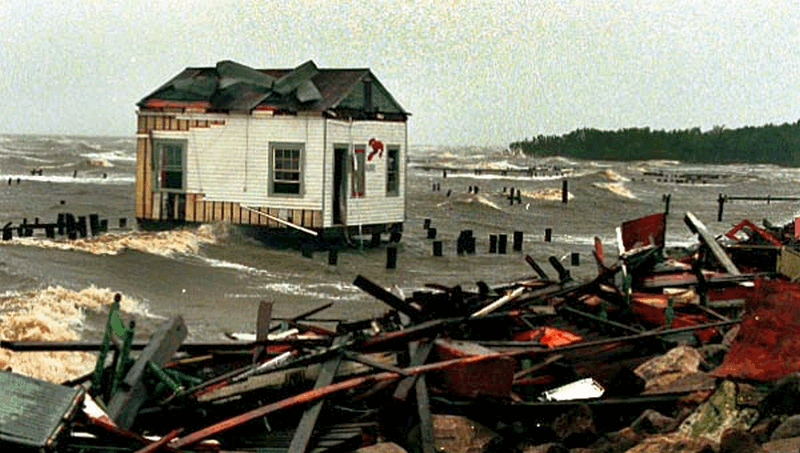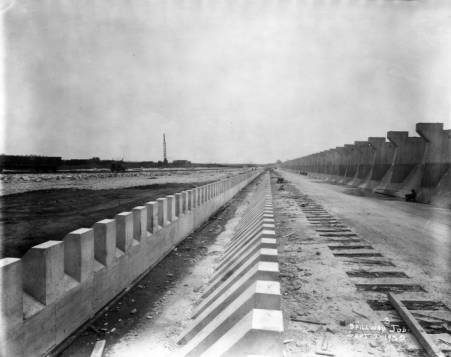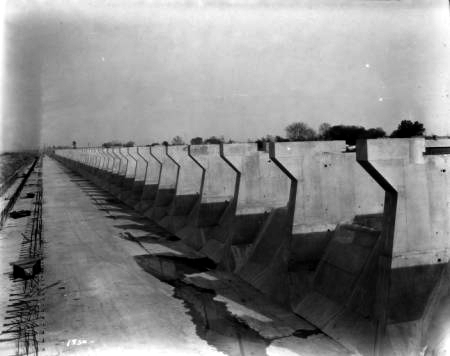|
Today in New Orleans History |
|
|
September 28


 To receive an update for each day in New Orleans history,
join our facebook page - Today in New
Orleans History.
 To receive an update for each day in New Orleans
history, join our facebook page
- Today in New Orleans History
Front page news in the Daily Picayune on September 28, 1911 announced the arrest of Miss
Annie Crawford, 28 year-old resident of 1011 Peters Avenue, for the poisoning of her 24 year-old sister Elise at their home.
on September 23. Elise had been ill for quite some time before her death. The Crawford family had
lost three family members within the past 15 months. On June 25, 1910, another sister, Mary Agnes Crawford died
suddenly -- the cause of death was attributed to Acute Meningitis. Three weeks later on July 15 her
father, Walter C. Crawford passed away -- the cause of death was allegedly Uremic
Poisoning. Two weeks after that, on July 29 her mother died -- it was thought that she also succumbed
to Uremic Poisoning. Upon the death of Elise suspitions were raised that the family
might have been victims of murder. Out
of work since losing her job, it was determined that she was the
insurance beneficiary of each deceased family member; Mary Agnes was insured for $300, her father for $800,
her mother for $800, and her sister Elise for $250. Another sister, Gertrude,
said "I don't want Annie to nurse me if I ever get sick. She gives such funny medicine".
District Attorney St. Claire Adams said, "It was established today the that Annie Crawford
is a drug fiend and probably is addicted to morphine. It is also established that she had
access during the past three weeks to morphine and was in a position to obtain it in practically
any quantity. During the indisposition of Elise Crawford she bitterly complained that her
food and drink were drugged. I have charged Annie Crawford with the murder of her sister Elise". The
case came before the Grand Jury on October 10 and Annie Crawford was indicted. On March 13, 2012 the began and she pled
not guilty. She had admitted to poisoning Elise with morphine capsules but said that she accidentally administered the wrong
medication -- she thought she had given Elise calomel tablets which she had purchased at Waldorf's
Pharmacy. She also admitted to being a morphine addict. Elise's body was, once again, exhumed for further
examination. Laboratory slides harvested from her organs were brought to the courtroom as evidence. Annie's attorney
Lionel Adams exclaimed that this was a "macabre display" while District Attorney St. Claire Adams objected.
Tempers flared and the two began to physically scuffle. While others in the courtroom attempted to quell the melee the
slides were pushed and went crashing to the floor. Annie was led from the room while fainting. During the trial,
professors from Tulane Medical School were called in as expert witnesses. Some opposed the opinions of others.
Tulane students aligned with the professor whose opinion favored Annie's innocence rushed to Parish Prison in an attempt to
carry her away. Police formed a ring of guards around the building and the students were barred from the courtroom. This
spectacular trial, which attracted national attention, ended as a mistrial on March 26, 1912 as a mistrial. The jury
had voted 9-3 in favor of an acquittal but were deadlocked and failed to reach a verdict. Anne Crawford was not
tried for the murder of her mother, father, or other sister because they had been buried
too long for current forensics to determine if they had been poisoned. On March 27, 1913, Elise's organs were
released to Annie and her remaining siste and reburied at St. Patrick's. The two sisters reported that they planned
to move to Port Arhtur, Texas. On June 10, 1912, Senator Schator Williams introduced a bill to prohibit written and
oral confessions of prisoners. Citing Annie Crawford's case as a "cruel example" of third degree methods
used by Distrct Attorney Adams' office as an example of coercive tactics, the bill passed with only one nay vote. |
|
|

To receive an update for each day in New Orleans history,
join our facebook page - Today in New
Orleans History.
Analytics |


 The spillway's levees were completed in the summer of 1932. Three railroad crossings (including the one easily viewed
from the Interstate over Lake Pontchartrain) were finished in February 1935. The automobile bridge had opened to traffic,
months before the dedication, on September 28, 1935. The concrete spillway gates were completed
in February 1937.
The spillway's levees were completed in the summer of 1932. Three railroad crossings (including the one easily viewed
from the Interstate over Lake Pontchartrain) were finished in February 1935. The automobile bridge had opened to traffic,
months before the dedication, on September 28, 1935. The concrete spillway gates were completed
in February 1937. 
